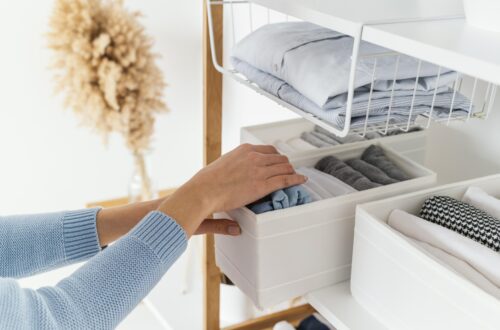Insulate for Lower Energy Costs
Did you know that the energy you use to heat and cool your home accounts for nearly half of your annual energy bill? That’s why it’s so important to take steps to insulate your home and make it more energy efficient. There are a number of things you can do to lower energy costs and improve the insulation in your home, from adding insulation to your attic or crawl space, to installing new windows and doors that better seal out the air.

Insulate to Lower Energy Costs
Inspect Your Insulation
The best way to determine if your attic insulation needs to be replaced or updated is to take a look at it yourself. To do this, you’ll need to go into your attic and take a look at the insulation.
If the insulation is visibly damaged, wet, or clogged with debris, then it’s likely in need of replacement. If the insulation is in good condition but doesn’t seem to be enough for your home, you may want to add more insulation.
You can also check the R-value of your insulation. The R-value measures how effective an insulator is, with higher numbers indicating better performance. If your insulation has an R-value of less than 30, you may want to consider replacing it.
Blowing insulation is a popular choice for insulating attics, as it is quick and easy to install. It is made of small, fluffy pieces of insulation that are blown into the spaces between the rafters and the attic floor.
Sheet insulation, on the other hand, is a better option for insulating walls and floors. It is made of thick, rigid sheets of insulation that are installed between the studs or joists.
Energy Efficient Doors and Windows
Another way to improve the energy efficiency and of your home is to install energy-efficient doors and windows. These products are designed to better seal out the air, keeping your home more comfortable and lower energy costs.
You can also take steps to weatherize your doors and windows, such as adding caulking or weatherstripping around them. This will help to further seal out the air and improve the energy efficiency of your home.
When shopping for energy-efficient doors and windows, look for products that have the ENERGY STAR label. This label means that the product meets strict energy-efficiency guidelines set by the U.S. Environmental Protection Agency (EPA).
You can also check the U-factor of energy-efficient doors and windows. The U-factor measures how well a product prevents heat from escaping. The lower the U-factor, the better the product is at insulating your home.
Maintaining Crawl Space Vents
If your home has a crawl space, be sure to keep the vents open. These vents help to circulate air and prevent moisture from building up in the crawl space.
If the vents are covered or blocked, the air can’t circulate properly and the crawl space can become damp, which can lead to mold and mildew growth.
In addition to keeping the vents open, you should also make sure that the crawl space is well-ventilated. This will help to keep the area dry and free of moisture.
You can improve the ventilation in your crawl space by installing a vapor barrier on the floor of the crawl space. This barrier will help to prevent moisture from seeping into the crawl space from the ground.
Clear out the Attic
If you want to make sure that your attic is as energy efficient as possible, it’s important to not store anything in it. This includes not storing furniture, boxes, or any other items in the attic.
When you store things in the attic, it blocks the insulation and prevents it from doing its job. This can lead to increased energy usage and higher energy bills.
The best way to keep your attic energy-efficient is to keep it clear and free of any obstructions. This will allow the insulation to do its job and help keep your home comfortable and energy efficient.
Change Your Air Filters
One of the simplest things you can do to improve the energy efficiency of your home is to change your air filters. Air filters help to remove contaminants from the air, making it healthier to breathe.
In addition, changing your air filters regularly can also help to improve the energy efficiency of your home. This is because dirty air filters can make your heating and cooling system work harder, which uses more energy and raises your energy bills.
To keep your air filter clean, be sure to change it every three months or as needed. You may need to change it more often if you have pets or live in an area with a lot of dust or pollen.
When shopping for an air filter, look for one with a high MERV rating. The MERV (Minimum Efficiency Reporting Value) rating measures how effective an air filter is at removing contaminants from the air.
The higher the MERV rating, the better the air filter is at trapping contaminants. However, filters with a high MERV rating can also restrict airflow, so it’s important to choose one that is designed for your specific heating and cooling system.
Making these simple changes can help you lower energy costs and reduce your carbon footprint as well. So why not give them a try? You may be surprised at how much energy and money you can save!






